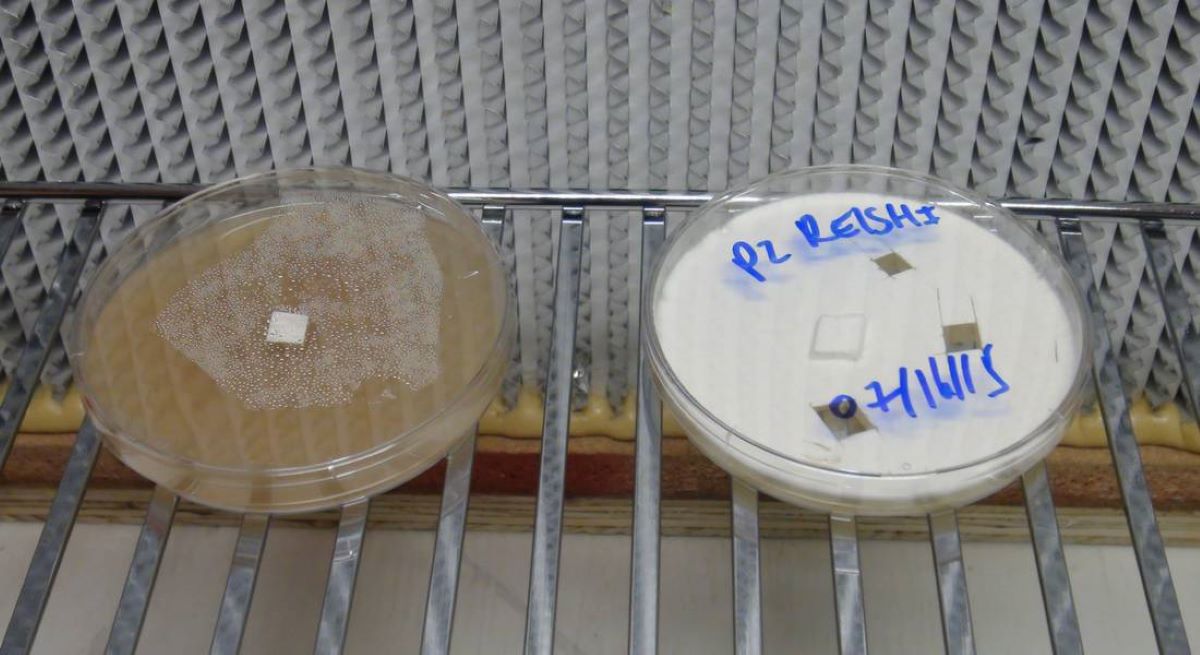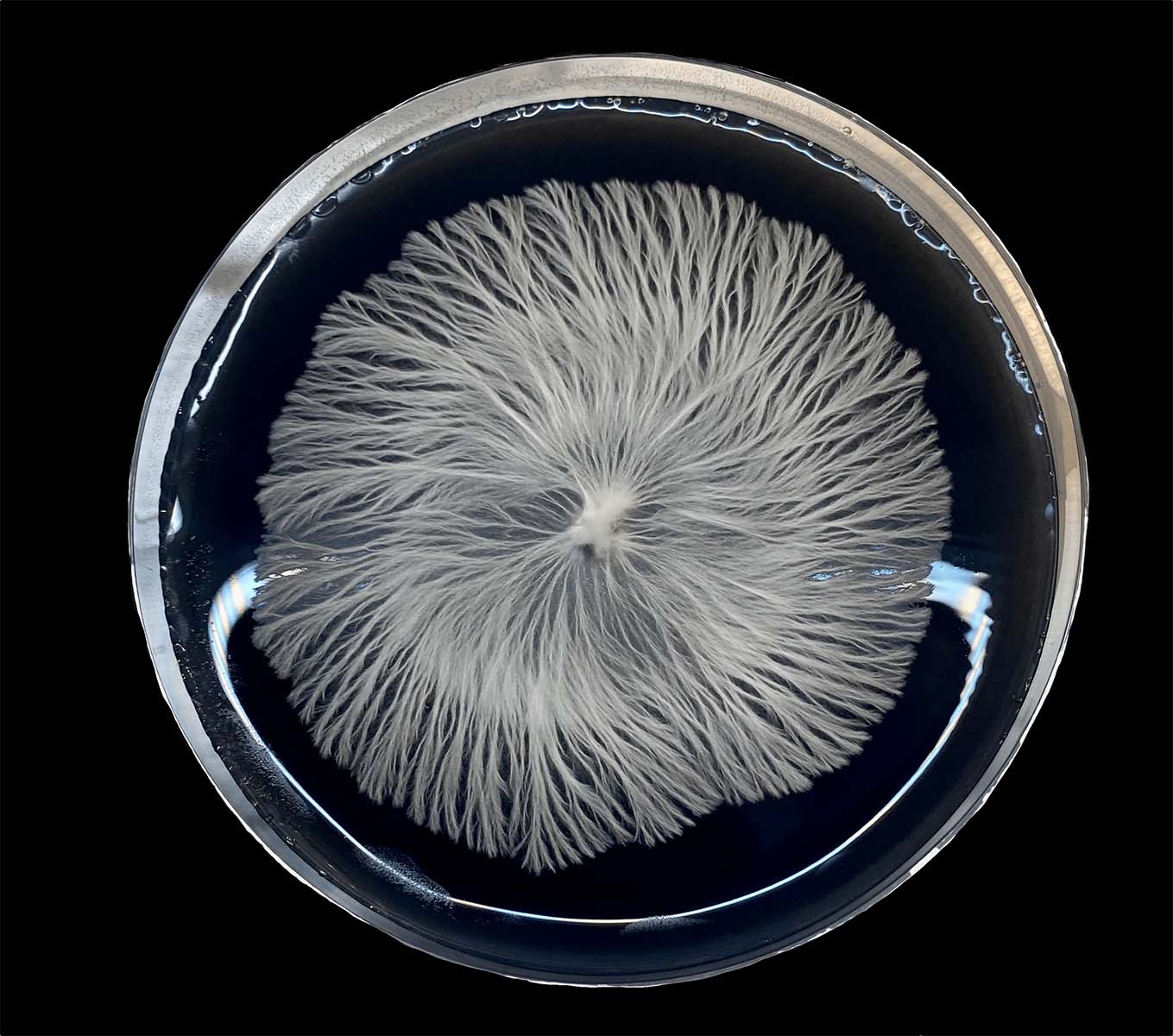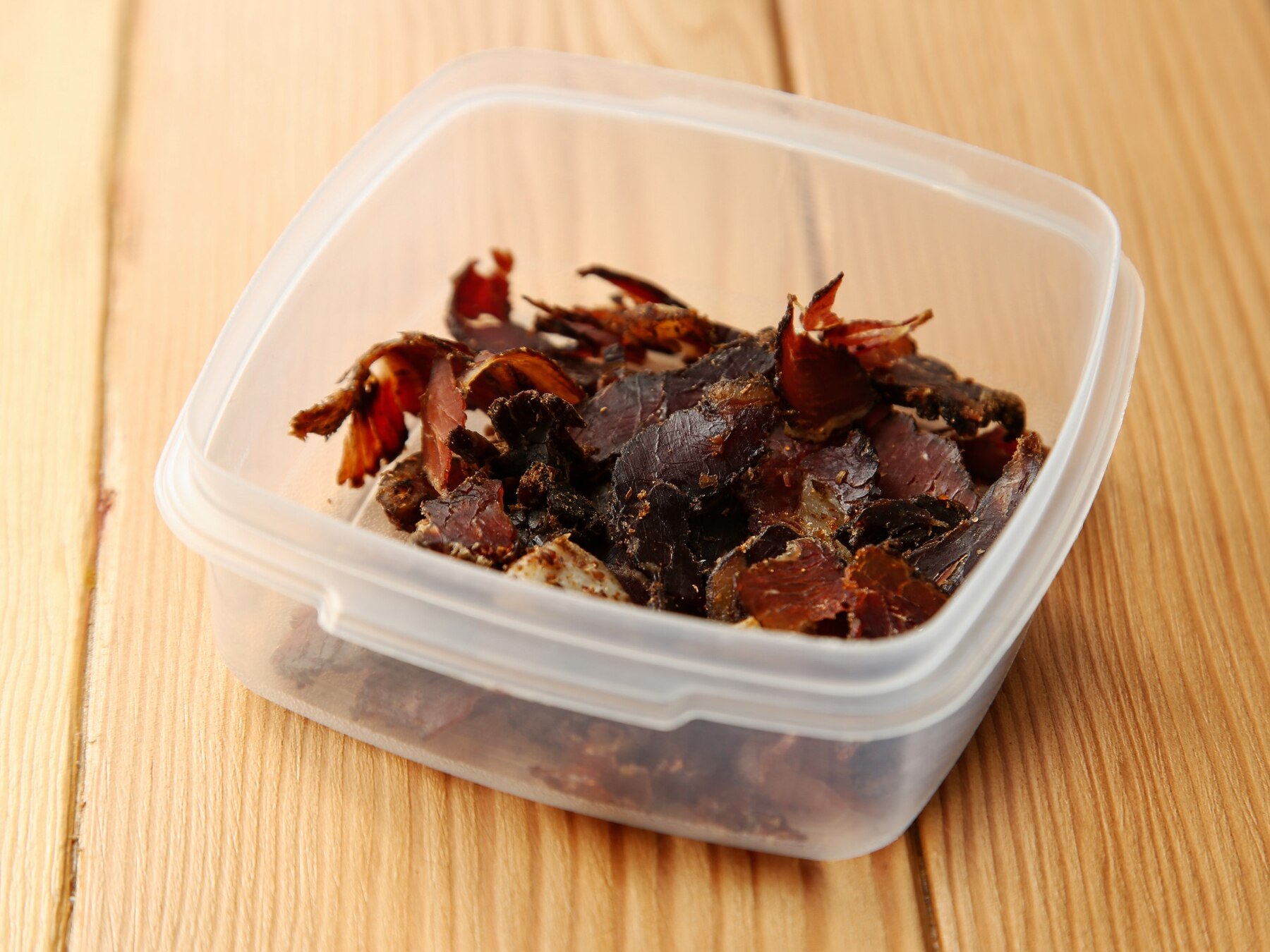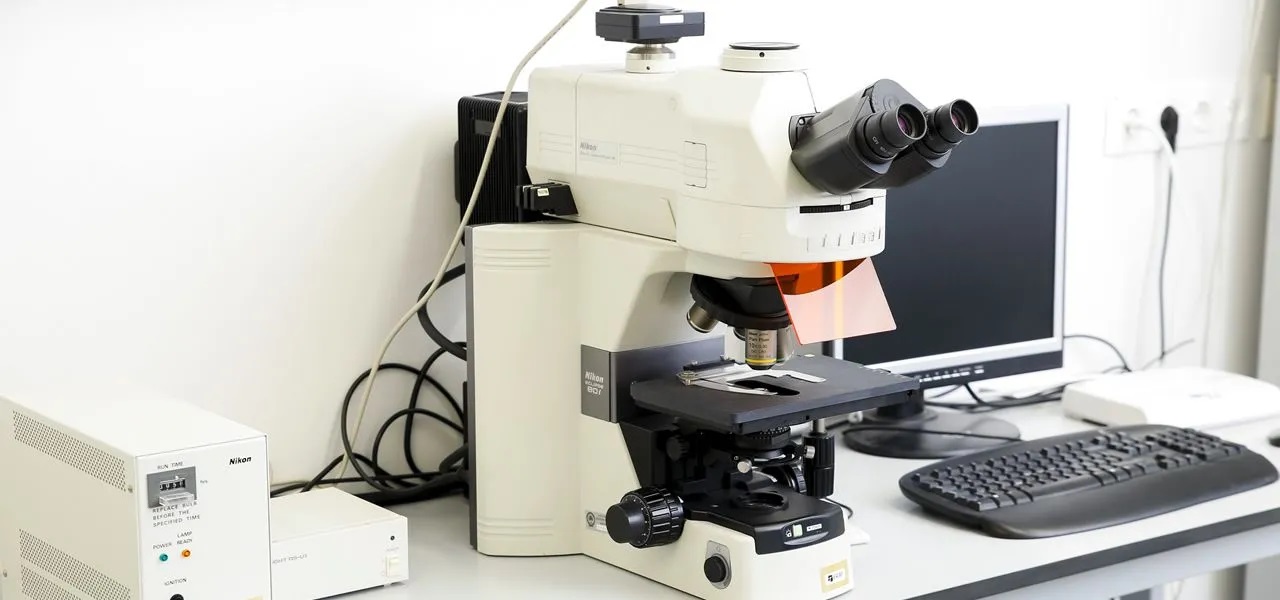

Articles
How To Store Agar
Modified: December 7, 2023
Learn effective methods for storing agar articles. Follow these tips to ensure the longevity and quality of your agar supplies.
(Many of the links in this article redirect to a specific reviewed product. Your purchase of these products through affiliate links helps to generate commission for Storables.com, at no extra cost. Learn more)
Introduction
Welcome to the world of agar! Whether you’re a seasoned scientist or an adventurous home cook, agar is a versatile ingredient that can be used in a wide range of applications. From cultivating bacteria in a lab to creating stunning jelly desserts in the kitchen, agar has become a staple in many industries.
But as with any ingredient, proper storage is crucial to maintain the quality and effectiveness of agar. In this article, we will explore the importance of storing agar correctly and provide you with helpful tips and guidelines to ensure its longevity.
But first, let’s understand what agar is. Agar, also known as agar-agar, is a gelatinous substance derived from seaweed. It is a natural polysaccharide composed of agarose and agaropectin, which give it its gel-like properties. Due to its unique characteristics, agar is widely used in microbiology, molecular biology, food science, and other research fields.
Now, let’s dive into why proper storage of agar is so critical.
Key Takeaways:
- Proper storage of agar is crucial to maintain its gel strength, prolong shelf life, preserve nutritional value, prevent contamination, and promote cost-effectiveness. Following recommended storage conditions ensures optimal quality and effectiveness.
- Factors such as temperature, moisture, light, and air exposure play significant roles in agar storage. Storing agar in a cool, dry, and dark environment, away from contaminants, and using airtight containers are essential for maintaining its quality and effectiveness.
Read more: How To Store Agar Plates After Inoculation
Why is Proper Storage of Agar Important?
Proper storage of agar is essential to maintain its quality, efficacy, and shelf life. Here are a few reasons why it is important to store agar correctly:
1. Maintaining Gel Strength: Agar’s gelling properties make it valuable in various applications. To ensure its gel strength, proper storage is crucial. Exposure to moisture, heat, or improper packaging can cause agar to lose its gelling ability, making it challenging to achieve the desired results.
2. Prolonging Shelf Life: Agar has a limited shelf life, even when stored correctly. However, by following storage guidelines, you can maximize its shelf life and avoid unnecessary wastage. This is particularly important for laboratories and research facilities that rely on agar for their experiments and cultures.
3. Preserving Nutritional Value: Agar contains essential nutrients and minerals that may deteriorate over time if not stored properly. By ensuring the right storage conditions, you can help preserve the nutritional value of agar, making it more effective in food or research applications.
4. Preventing Contamination: Agar is susceptible to contamination from microorganisms, which can compromise its quality and render it unusable. Properly sealed and stored agar reduces the risk of contamination, ensuring its purity and effectiveness.
5. Cost-Effectiveness: Proper storage practices can save you money in the long run. By extending the shelf life of agar, you can avoid frequent repurchases and minimize waste, thus optimizing your resources.
In summary, proper storage of agar is vital to maintain its gel strength, prolong its shelf life, preserve its nutritional value, prevent contamination, and promote cost-effectiveness. Whether you are using agar in a lab, culinary experiments, or any other application, following storage guidelines will ensure that your agar remains potent and effective for the desired purpose.
Factors to Consider when Storing Agar
When it comes to storing agar, there are several factors to consider to ensure its optimal quality and longevity. Let’s take a look at the key factors you should keep in mind:
1. Temperature: Agar should be stored at a cool and consistent temperature. Ideally, the temperature should be below room temperature, around 15-20°C (59-68°F). Avoid exposing agar to extreme temperatures, as it can affect its texture and gelling properties.
2. Moisture: Agar is hygroscopic, meaning it readily absorbs moisture from the environment. To prevent agar from becoming overly moist and clumping, you should store it in an airtight container or moisture-resistant packaging. Moisture can degrade agar’s quality and affect its ability to gel properly.
3. Light: Agar should be stored away from prolonged exposure to light, especially direct sunlight. Ultraviolet rays can break down agar’s molecular structure, leading to reduced gel strength and compromised quality. It is best to store agar in a dark or opaque container to protect it from light.
4. Air Exposure: Oxygen exposure can cause agar to degrade over time. It is essential to seal the packaging tightly to minimize air contact. If you are using agar from a larger container, make sure to reseal it promptly to preserve its freshness and prevent contamination.
5. Packaging: The packaging material plays a vital role in agar storage. Opt for packaging that is moisture-resistant, airtight, and light-blocking. Many agar suppliers provide their products in sealed pouches or containers specifically designed for optimal storage. If you need to transfer agar into a different container, ensure that it meets these criteria.
6. Labeling: Properly label your agar containers with the date of purchase or expiration. This allows you to keep track of the agar’s freshness and use it within its recommended shelf life.
By considering these factors and taking the necessary precautions, you can maintain the quality and effectiveness of agar for an extended period. Remember to store agar in a cool, dry, and dark environment, away from light, moisture, and excessive air exposure. This will help ensure that your agar retains its gelling properties and remains viable for your intended applications.
Recommended Storage Conditions for Agar
To ensure that agar maintains its quality and effectiveness, it’s important to store it under the right conditions. Here are the recommended storage conditions for agar:
1. Temperature: Agar should be stored in a cool environment. The ideal temperature range is between 15-20°C (59-68°F). Avoid exposing agar to extreme temperatures, as this can affect its texture and gelling properties. Keep agar away from heat sources, direct sunlight, and areas with fluctuating temperatures.
2. Moisture: Agar is hygroscopic and absorbs moisture easily. To prevent clumping and degradation, store agar in a dry environment with low humidity. Use moisture-resistant packaging or airtight containers to minimize moisture exposure. Keep agar away from sources of water, such as sinks or areas prone to condensation.
3. Light: Agar should be protected from light exposure, especially direct sunlight. UV rays can break down agar’s molecular structure and reduce its gel strength. Store agar in a dark or opaque container to shield it from light. If using larger containers, keep them in a dark storage area or cover them with an opaque material.
4. Air: Agar should be stored in airtight containers or sealed packaging to minimize contact with air. Oxygen exposure degrades agar over time, affecting its quality. Make sure to seal the packaging tightly after each use to maintain freshness. If transferring agar to a different container, ensure it is airtight to prevent air exposure.
5. Labeling: Properly label agar containers with the date of purchase or expiration. This helps you keep track of its freshness and use it within the recommended shelf life. Use a waterproof or smudge-resistant label to ensure the information remains visible and legible.
6. Storage Location: Choose a dedicated storage area for agar that meets the recommended conditions. Avoid storing agar near chemicals, strong odors, or substances that could potentially contaminate it. Maintain a clean and organized storage space to reduce the risk of contamination.
By following these recommended storage conditions, you can prolong the shelf life of agar and maintain its gel strength and effectiveness. Remember to store agar in a cool, dry, and dark environment, protect it from moisture, light, and air exposure, and properly label your containers. These practices will help ensure that your agar remains fresh, potent, and ready to use for your scientific experiments, culinary creations, or other applications.
Store-bought Agar: Best Practices
When it comes to store-bought agar, there are several best practices to follow to ensure its quality and longevity. Whether you’re purchasing agar for scientific research or culinary endeavors, here are some recommendations to consider:
1. Check the Expiration Date: Before purchasing agar, always check the expiration date on the packaging. Choose the product with the furthest expiration date to allow for a longer shelf life once you bring it home.
2. Inspect the Packaging: Ensure that the packaging is intact and undamaged. If the packaging is punctured or compromised in any way, it can lead to moisture or air exposure, which can degrade the agar. Select a package that is properly sealed and free from leaks or tears.
3. Follow Storage Guidelines: Once you’ve brought the agar home, follow the recommended storage guidelines provided by the manufacturer. This typically includes storing agar in a cool, dry, dark place, away from moisture, light, and fluctuating temperatures. Refer to the previous section on recommended storage conditions for agar for detailed guidelines.
4. Use Airtight Containers: If the agar package is not resealable, transfer the agar to an airtight container to prolong its shelf life. Ensure that the container is clean, dry, and airtight to prevent moisture and air exposure. Label the container with the expiration date to keep track of its freshness.
5. Avoid Contamination: When using agar from a store-bought package, make sure to use clean utensils and avoid touching the agar with bare hands. Contamination can compromise the quality and effectiveness of the agar. Always wash your hands thoroughly before handling agar and follow proper hygiene practices.
6. Rotate Stock: If you frequently use agar, it’s a good practice to rotate your stock. Use the older agar first while ensuring that it is still within its expiration date. This helps to minimize waste and ensures that you are using the agar while it is still fresh and effective.
7. Store in a Dedicated Area: Designate a specific area for storing your store-bought agar, away from chemicals, strong odors, or potential contaminants. Keep the area clean and organized, minimizing the risk of cross-contamination.
By following these best practices, you can ensure that your store-bought agar remains fresh, effective, and ready to use for your intended applications. Proper storage and handling will maximize the shelf life of agar, allowing you to conduct successful experiments or create delicious agar-based dishes with confidence.
Store agar in a cool, dry place away from direct sunlight and moisture. Keep it tightly sealed to prevent contamination. Check the expiration date before use.
Read more: How To Grow Orchids From Seed Without Agar
Homemade Agar: Storage Guidelines
If you’ve made agar from scratch at home, it’s important to follow proper storage guidelines to maintain its quality and longevity. Homemade agar can be a cost-effective and customizable option, but it requires careful handling and storage. Here are some storage guidelines to consider:
1. Cool and Dry Storage: Store homemade agar in a cool and dry location, away from heat sources and direct sunlight. The ideal temperature for storage is between 15-20°C (59-68°F). Exposure to heat can cause agar to melt or lose its gelling properties, so make sure to keep it in a cool environment.
2. Airtight Containers: Transfer homemade agar to airtight containers to protect it from moisture and air exposure. Moisture can cause agar to become soft or spoil, compromising its functionality. Ensure that the containers are clean, dry, and properly sealed to maintain the agar’s freshness and quality.
3. Labeling: Label the containers with the date of preparation to keep track of the agar’s freshness. Homemade agar typically has a shorter shelf life compared to store-bought agar, so it’s important to use it within a reasonable amount of time. Proper labeling helps you monitor its expiration date and prevent the use of expired agar.
4. Refrigeration: If you live in a hot and humid climate or want to extend the shelf life of homemade agar, you can store it in the refrigerator. Place the airtight containers in the refrigerator’s main compartment, away from strong-smelling foods. However, keep in mind that refrigeration can cause agar to absorb excess moisture, altering its texture and gelling properties. If you choose to refrigerate agar, be mindful of condensation and use it within a shorter time frame.
5. Freezing (Optional): If you have a large batch of homemade agar and want to extend its shelf life further, you can freeze it. Transfer the agar into freezer-safe containers or ice cube trays and label them accordingly. When using frozen agar, allow it to thaw in the refrigerator before use. Note that freezing can slightly change the texture of agar, so it may not be suitable for all applications.
6. Quality Check: Before using homemade agar that has been stored, visually inspect it for any signs of spoilage, mold growth, or off-putting odors. If there are any indications of contamination or deterioration, it’s best to discard the agar and prepare a fresh batch.
By following these storage guidelines for homemade agar, you can ensure its freshness and usability. Remember to store it in a cool, dry, and airtight container, label it with the date of preparation, and consider refrigeration or freezing if desired. With proper storage, homemade agar can be a reliable and cost-effective ingredient for your scientific experiments or culinary creations.
Tips for Extending the Shelf Life of Agar
Agar is a valuable ingredient with a limited shelf life, but there are several tips and techniques you can employ to extend its longevity. By following these practices, you can maximize the usability and effectiveness of agar. Here are some tips for extending the shelf life of agar:
1. Proper Packaging: Store agar in airtight containers or sealed packaging to minimize exposure to air and moisture. Keep in mind that moisture can cause agar to clump or lose its gelling properties, while air exposure can lead to degradation. Choose packaging that is designed for optimal storage and ensure it is well-sealed after each use.
2. Cool and Dry Environment: Maintain a cool and dry storage area for agar. Store it in a location where the temperature remains below room temperature, ideally between 15-20°C (59-68°F). Excessive heat can cause agar to melt or lose its ability to gel properly. Avoid storing agar in areas prone to moisture, such as the kitchen sink or near steam-generating appliances.
3. Dark Storage: Protect agar from exposure to light, especially direct sunlight. Ultraviolet rays can degrade agar and reduce its gel strength. Store agar in a dark or opaque container, or keep it in a dark area to preserve its quality. If the original packaging is transparent, consider transferring it to a light-blocking container.
4. Use Clean Utensils: When working with agar, always use clean utensils to prevent contamination. Wash and dry utensils thoroughly before using them to handle agar. Avoid touching agar with bare hands, as it can introduce bacteria or other contaminants that may affect its shelf life.
5. Minimal Air Exposure: After each use, promptly seal the packaging or container to minimize air exposure. Oxygen can cause degradation of agar over time, affecting its quality. If using larger containers, consider transferring smaller portions to keep the remaining agar tightly sealed and protected from air exposure.
6. Rotate Stock: If you have multiple containers or batches of agar, make it a practice to use the older ones first. This helps prevent agar from sitting unused for extended periods and potentially expiring. Proper rotation ensures that you maximize the freshness of agar and minimize unnecessary waste.
7. Quality Check: Before using agar, visually inspect it for any signs of spoilage, mold, or off-putting odors. If there are any indications of contamination or deterioration, it is best to discard the agar and use fresh, uncontaminated supplies.
By following these tips, you can extend the shelf life of agar and ensure its freshness and effectiveness for your experiments, culinary creations, or other applications. Proper packaging, storage conditions, and hygiene practices all play a crucial role in maintaining the quality of agar over time.
Avoiding Common Mistakes in Agar Storage
Proper storage of agar is crucial for maintaining its quality and effectiveness. However, there are certain common mistakes that people often make when storing agar. By being aware of these mistakes, you can avoid them and ensure that your agar remains fresh and usable. Here are some common mistakes to avoid in agar storage:
1. Exposure to Heat: One of the most common mistakes is exposing agar to excessive heat. High temperatures can cause agar to melt or lose its gelling properties. Avoid storing agar near heat sources, such as stoves, ovens, or direct sunlight. Keep it in a cool environment with a stable temperature to preserve its effectiveness.
2. Failure to Seal Properly: Improper sealing of agar containers or packaging is another common mistake. If agar is not securely sealed, it is vulnerable to air and moisture exposure, which can lead to degradation and clumping. Always ensure that the packaging or container is tightly sealed after each use to maintain agar’s integrity.
3. Ignoring Moisture Exposure: Agar is hygroscopic and readily absorbs moisture from the environment. Moisture exposure can cause agar to become soft, sticky, or develop clumps, rendering it less effective. Store agar in a dry environment and avoid areas with high humidity or near water sources.
4. Overlooking Light Protection: Agar is sensitive to light, particularly ultraviolet (UV) rays. Prolonged exposure to light can degrade agar and reduce its gel strength. Store agar in a dark or opaque container to shield it from light and avoid keeping it in direct sunlight.
5. Not Rotating Stock: Failing to rotate stock is a common mistake that can lead to the expiration of agar. Some individuals may leave the same container of agar untouched for an extended period, causing it to go beyond its shelf life. To avoid this, make it a practice to rotate your stock, using older agar first and ensuring that it is within its recommended expiration date.
6. Poor Labeling: Neglecting to label agar containers with the date of purchase or expiration is another mistake to avoid. Without proper labeling, it becomes difficult to track the freshness of agar. Always label containers clearly to help you identify and use agar within its recommended shelf life.
7. Storing Near Contaminants: Storing agar near chemicals, strong odors, or potential contaminants is a mistake that can compromise its quality. Agar can easily absorb odors or become contaminated, affecting its usability. Store agar in a dedicated area away from any potential contaminants to ensure its purity.
By avoiding these common mistakes and following proper storage practices, you can maintain the quality and effectiveness of agar. Remember to store agar in a cool, dry, and dark environment, seal it tightly, protect it from moisture and light exposure, label it correctly, rotate your stock, and store it away from contaminants. These preventive measures will ensure that your agar remains fresh and ready to use for various applications.
Conclusion
Proper storage of agar is essential to maintain its quality, effectiveness, and shelf life. Whether you’re using store-bought agar or making it at home, following the recommended storage guidelines and avoiding common mistakes is crucial for optimal results. By implementing the right practices, you can ensure that your agar remains fresh, potent, and ready to use in scientific experiments, culinary creations, or other applications.
Factors such as temperature, moisture, light, and air exposure play significant roles in agar storage. Storing agar in a cool and dry environment, away from direct sunlight and heat sources, is vital for preserving its gel strength. Keeping agar in airtight containers or sealed packaging helps protect it from moisture and air exposure, preventing clumping or degradation.
For store-bought agar, checking the expiration date, inspecting the packaging for integrity, and adhering to the storage guidelines provided by the manufacturer are crucial steps. Homemade agar requires careful handling and storage, including the use of airtight containers, cool environments, and protection from light and moisture.
To extend the shelf life of agar, rotate stock, use proper labeling to track freshness, and prevent contamination by utilizing clean utensils and designated storage areas. Avoiding common mistakes, such as exposure to heat, inadequate sealing, or improper storage near contaminants, will help maintain the quality and effectiveness of agar.
By following these best practices and storage guidelines, you can ensure that your agar remains in optimal condition, maximizing its usability and effectiveness. Whether you’re conducting scientific experiments, creating culinary delights, or using agar for other purposes, proper storage is key to achieving successful outcomes.
So, remember to store agar in a cool, dry, and dark environment, seal it tightly, protect it from moisture and light, label it correctly, rotate your stock, and store it away from contaminants. By doing so, you can confidently harness the full potential of agar and unlock its versatile applications.
Frequently Asked Questions about How To Store Agar
Was this page helpful?
At Storables.com, we guarantee accurate and reliable information. Our content, validated by Expert Board Contributors, is crafted following stringent Editorial Policies. We're committed to providing you with well-researched, expert-backed insights for all your informational needs.















0 thoughts on “How To Store Agar”